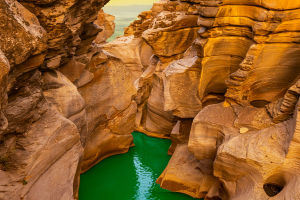Sedimentary rocks are one of the three major rocks that make up the Earth's lithosphere.
Sedimentary rocks are rocks formed from sediments through a long process of compaction, consolidation, and cementation, and are among the most common rocks on Earth, accounting for more than 70% of the total rocks in the Earth's crust.
Sedimentary rocks are formed by the accumulation of sediments, which mainly include particles suspended in water, biological bones and debris in water, wind, and sand, and glacial debris.
These sediments undergo a variety of physical, chemical, and biological effects after a certain period and pressure, forming different kinds of sedimentary rocks.
Common sedimentary rocks include sandstone, mudstone, tuff, coal, etc. Among them, sandstone is the most common sedimentary rock, formed by sand grains through the process of weathering, erosion, transport, deposition, and compaction over a long period.
Mudstone is formed by sediments such as clay, mud, and mineral particles through cementation, consolidation, and compaction.
Limestone is formed from the skeletons and remains of marine organisms through a long period of consolidation and cementation.
Coal is formed by plant remains after a long time of compaction and chemical changes.
All of the above sedimentary rocks are stratified, and the differences between each layer reflect the depositional conditions and depositional materials in different depositional environments.
Sedimentary rocks have an important place in geology. Sedimentary rocks retain much information about the history of the Earth, including the presence of ancient plant and animal fossils, and the stratification of sedimentary rocks has information about changes in the Earth's climate and environment.
Sedimentary rock layers can record the evolution of the Earth's history, from which information about the Earth's structure, climate, and environment can be understood. Sedimentary rocks often contain important energy resources such as oil and natural gas, which are important pillars of human economic development. In addition, sedimentary rocks are important materials for cultural heritage such as architecture and sculpture.
There are several main sources of material for sedimentary rocks, and weathering is a major channel. In addition, volcanic eruptions eject large amounts of volcanic material and are also a source of sedimentary material, plant, and animal organic matter also occupy a certain proportion of sedimentary rocks.
Sedimentary rock strata contain the vast majority of minerals, such as energy, non-metallic, metallic, and rare element minerals, and to a lesser extent, fossil assemblages.


